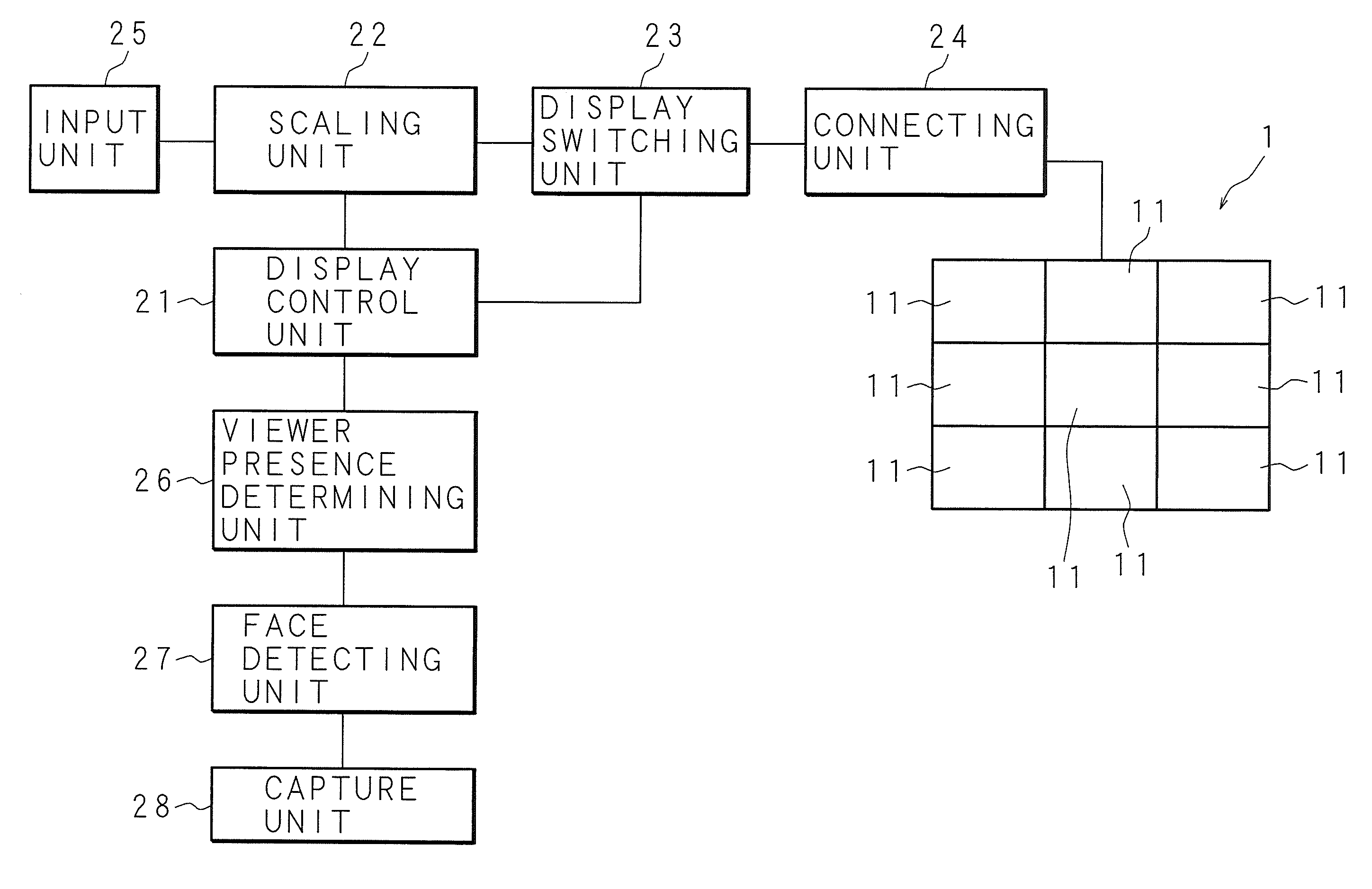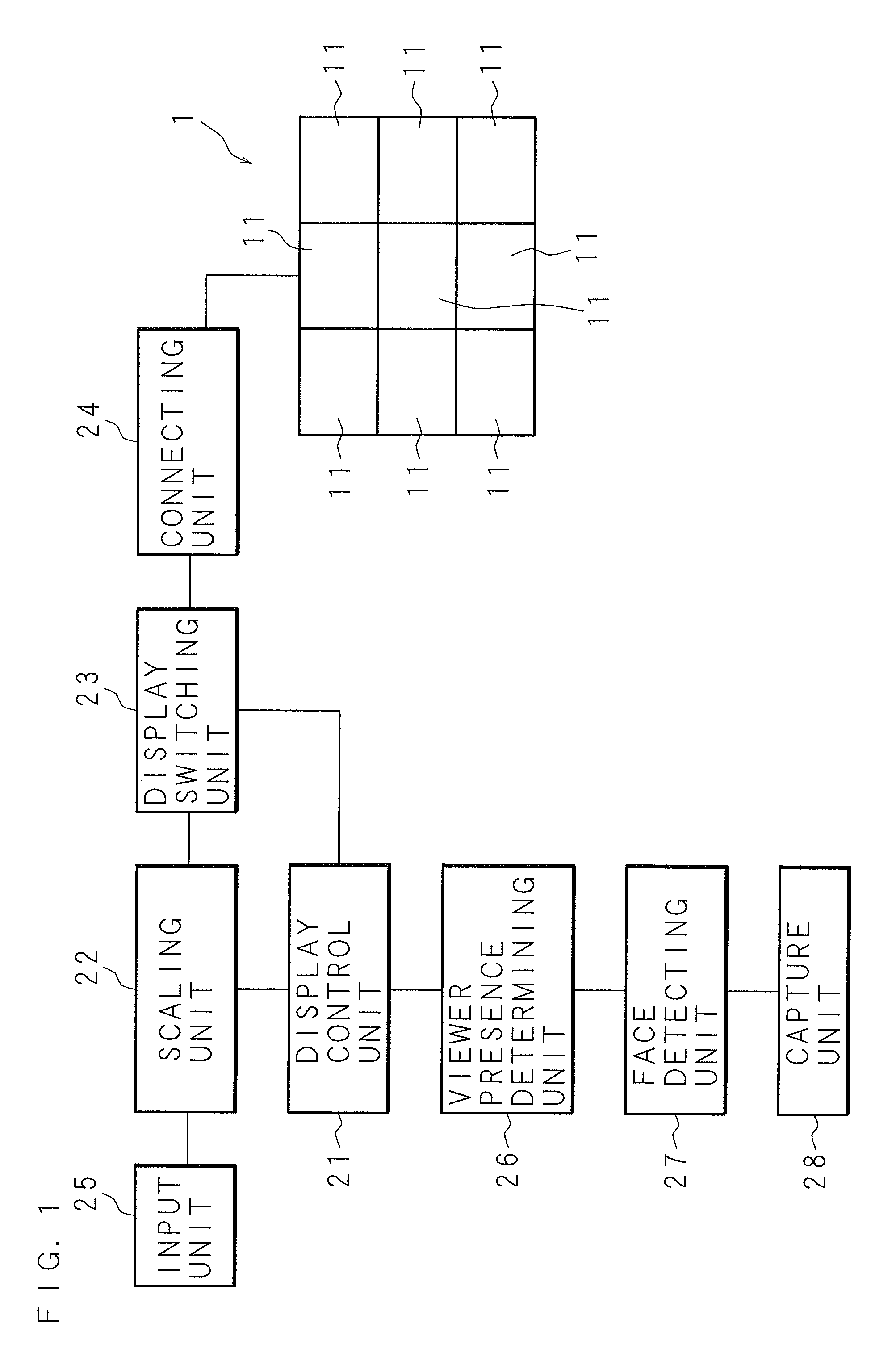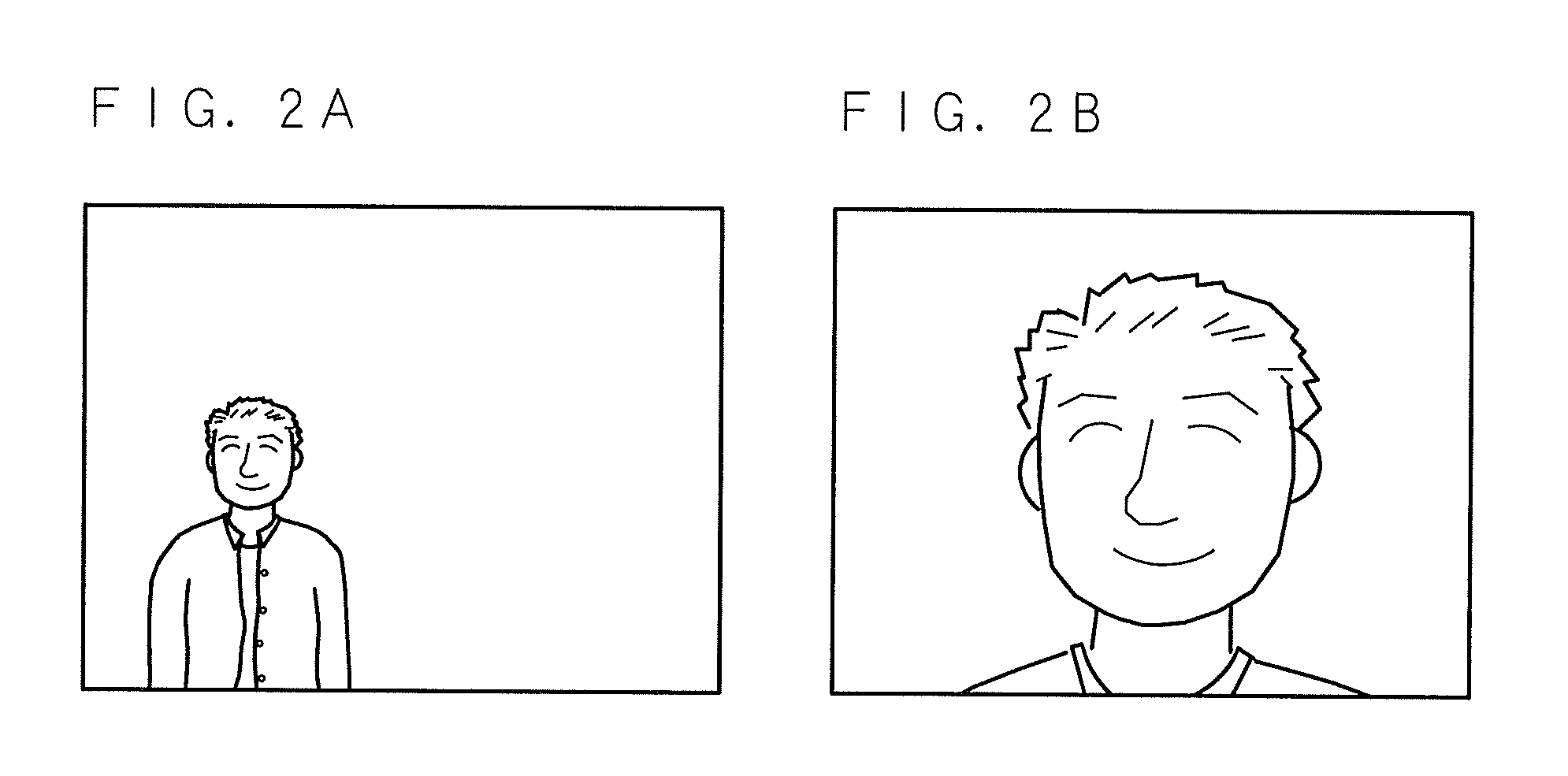Multi-display apparatus
a multi-display and display technology, applied in the field of multi-display displays, can solve the problems of difficult application of techniques, ununiform lines of sight, and difficulty in detecting lines of sight of unidentified viewers, and achieve the effects of reducing the number of displays, reducing the size, and small imag
- Summary
- Abstract
- Description
- Claims
- Application Information
AI Technical Summary
Benefits of technology
Problems solved by technology
Method used
Image
Examples
embodiment 1
[0039]FIG. 1 is a block diagram illustrating a configuration of a multi-display apparatus according to Embodiment 1. The multi-display apparatus is an information display which is installed in a store, public space or the like to show an image representing various types of information such as guidance of a facility, explanation of exhibits, news, advertisement and the like. The multi-display apparatus includes a display unit 1 constituted by a plurality of displays 11, 11, . . . . The display 11 is an image displaying unit such as a liquid-crystal display, plasma display or the like, and is formed to have a rectangular shape. The display unit 1 is configured by a plurality of displays 11, 11, arranged vertically and horizontally, which are combined together to form an enormous rectangular display. Assume that the display unit 1 is constituted by M displays 11 in a vertical line and N displays 11 in a horizontal line. This means that the display unit 1 includes M×N displays 11.
[0040]...
embodiment 2
[0055]In Embodiment 2, the multi-display apparatus adjusts the size of an image such that power consumption is reduced when no viewer is present. Since the internal configuration of the multi-display apparatus is similar to those in Embodiment 1, the explanation thereof will not be repeated here.
[0056]FIG. 5 is a flowchart illustrating a procedure of a process by which the multi-display apparatus according to Embodiment 2 adjusts the size of an image. While an image is being showed on the display unit 1, the capture unit 28 captures an image of the outside (S21), and the face detecting unit 27 determines whether or not a human face is detected in the captured image (S22). If the face detecting unit 27 detects a human face (YES at S22), the viewer presence determining unit 26 determines whether or not a viewer is present in the near-filed region of the multi-display apparatus (S23). If the viewer presence determining unit 26 determines that a viewer is present in the near region (YES...
embodiment 3
[0060]In Embodiment 3, it is illustrated that a multi-display apparatus shows an image with overlay display for both nearby and distant viewers to easily see the image. Since the multi-display apparatus has an internal configuration similar to that in Embodiment 1, the description thereof will not be repeated here.
[0061]FIG. 6 is a flowchart illustrating a procedure of a process by which a multi-display apparatus according to Embodiment 3 adjusts the size of an image. The capture unit 28 captures an image of the outside while the display unit 1 is showing the image (S31), and the face detecting unit 27 determines whether or not a human face is detected in the captured image (S32). If the face detecting unit 27 detects a human face (YES at S32), the viewer presence determining unit 26 determines whether or not a viewer is present in the near region of the multi-display apparatus (S33). If the viewer presence determining unit 26 determines that a viewer is present in the near region (...
PUM
 Login to View More
Login to View More Abstract
Description
Claims
Application Information
 Login to View More
Login to View More - R&D
- Intellectual Property
- Life Sciences
- Materials
- Tech Scout
- Unparalleled Data Quality
- Higher Quality Content
- 60% Fewer Hallucinations
Browse by: Latest US Patents, China's latest patents, Technical Efficacy Thesaurus, Application Domain, Technology Topic, Popular Technical Reports.
© 2025 PatSnap. All rights reserved.Legal|Privacy policy|Modern Slavery Act Transparency Statement|Sitemap|About US| Contact US: help@patsnap.com



